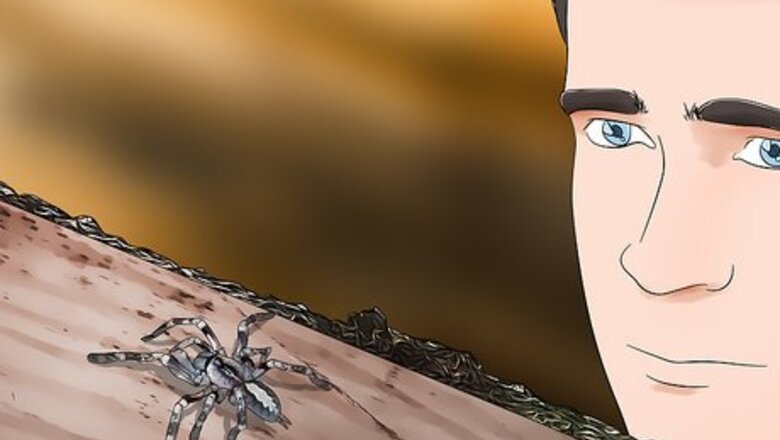
views
Controlling Your Own Reactions
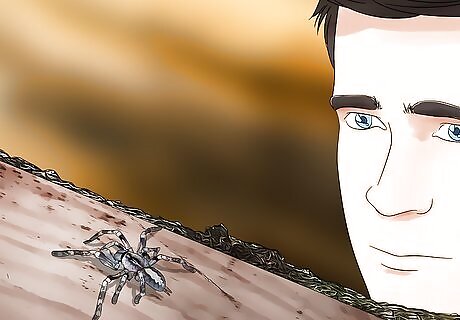
Take note of how you respond to bugs. Spend some time paying attention to your own reaction to bugs. If you flinch, swat, or squash every bug you come across, the child's fear may stem from your own. Observing yourself helps brings awareness, so you can start reacting in a more positive and helpful way.
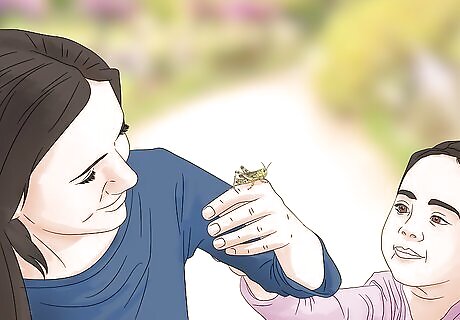
Model being calm and collected around bugs. If a bug lands on your shoulder or arm, act relaxed about it. For harmful bugs, calmly swat it away (if you're outdoors), move somewhere else, or capture and dispose of it. For harmless bugs, you might let it crawl on your finger for a while before releasing it back into nature. Avoid screaming, running, or showing obvious fear around bugs. To help your child take productive action against harmful bugs, you might show them how to spray or eliminate them appropriately. Wait until they're older to let them do it themselves. When they're younger, simply model the actions they should take.
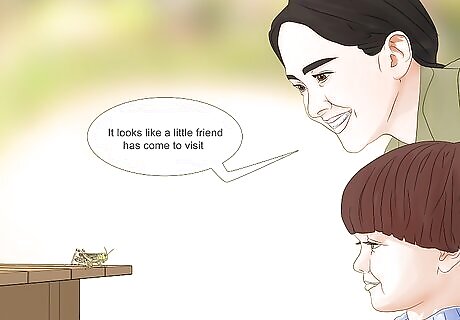
Remove fear-based words from your vocabulary. The things that you say have a big impact on how your child learns about the world and its creatures. Use positive and reassuring words about bugs whenever you can. Say, “It looks like a little friend has come to visit” instead of shouting, scrunching up your face, and saying something like “that thing scared me to death!"
Helping Them Get Comfortable with Bugs
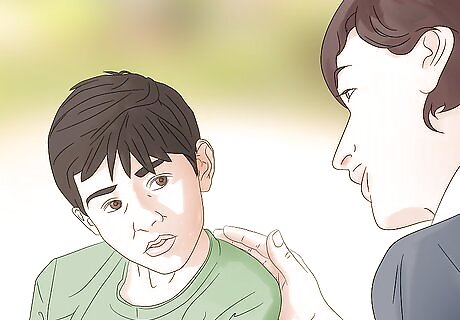
Soothe them without removing them from the situation. Ease your child's fear, but don’t allow them to run away simply because a bug is around. If they become upset, comfort them in the presence of the bug. This helps them gain control and see that they don't actually have to be afraid. Over time, they will slowly become desensitized to the bugs and not panic as they did before. If you swoop the kid up every time a bug comes around, you'll only reinforce the fear.
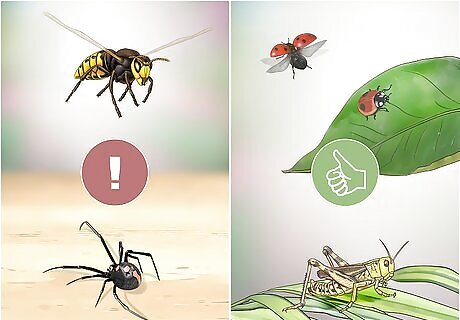
Teach them the differences between harmful and harmless bugs. As you educate your child about bugs, help them figure out how to spot potentially dangerous bugs like mosquitoes, spiders, and wasps versus innocent bugs like grasshoppers and ladybugs. Teach them appropriate ways to act when they encounter harmful bugs, so that they feel empowered. For example, yelling and screaming might alarm some bugs and actually cause them to sting or bite the child. Reacting calmly and mindfully keeps everyone safe.
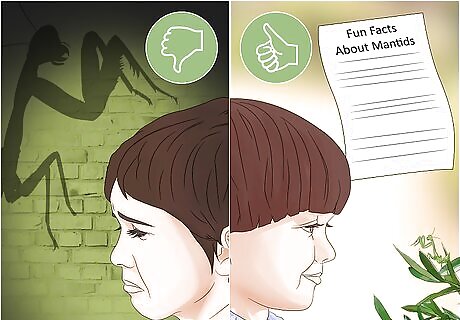
Ask questions about your child's fear when there aren't any bugs around. Question what makes them afraid of bugs and what exactly about them they don't like. Asking questions can get to the heart of the matter and help get rid of the fear. For example, if your preschooler is afraid because someone said bugs eat people, you can use the opportunity to correct them and give them some interesting facts about bugs.
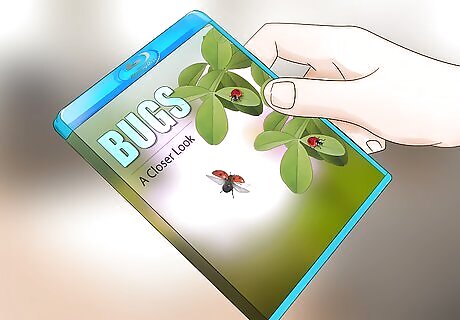
Help change their perspective by watching animated bug movies. Introduce your child to exciting bugs in the cinema. Rent or stream popular movies like “A Bug’s Life" or “Ants" to help your child see the amazing worlds bugs live in. Plus, connecting with bugs as characters may reduce the fear the child feels for real-life bugs.
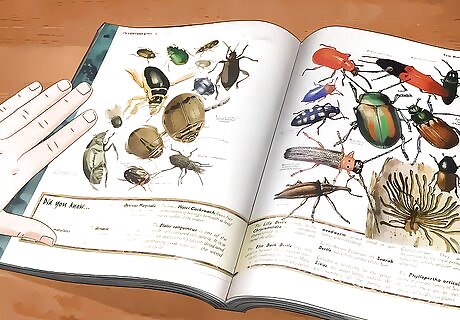
Plan a trip to the library to check out books and films. Visit the library and browse books, films, and audio materials about bugs. Look for the most child-accessible, colorful, and interesting information about bugs that you can find. Ask your librarian for help if you don't know where to start. Help your child learn about the interesting things bugs do, such as pollinating plants or building ecosystems. This can help make bugs less frightening and much cooler.

Listen to audio of bugs to get more comfortable. If your child is afraid of the noises made by bugs, listen to bug calls, wing movements, clicking sounds, etc. Do this along with reading explanations of what the bug is actually doing when these noises are being made.
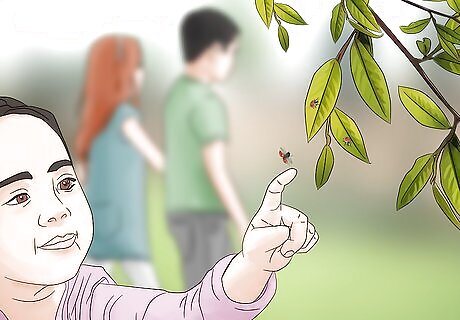
Go on an outdoor field trip and look at bugs together. As your child's anxiety lessens, go on an outdoor scavenger hunt for interesting bug species. Start with places that are close to your child, such as your vegetable garden, where most of the bugs are benign and even beautiful. Use the media you checked out from the library to try to identify each bug and figure out its role. Make a family activity out of catching lightening bugs and then releasing them.

Visit a wildlife conservatory or museum. Plan a field trip to a nearby conservatory or museum that houses live bugs you can examine. Encourage your child to observe the bugs in their habitats and ask the staff questions. They might also see other children who are excited by bugs. Seeing others act calmly around the insects may further reduce their fears.
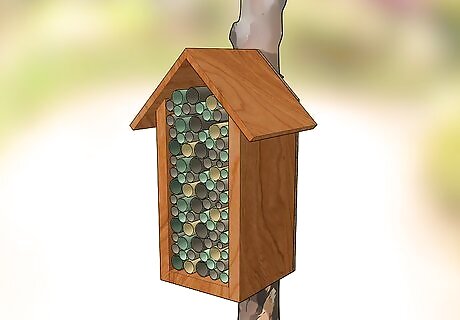
Consider making a bug house at home. Construct a home for friendly bugs in your garden or in a container inside the house. Having the chance to observe, feed and nurture a colony of insects can help your child to learn a great deal about these little creatures and lose their fear. For example, you might build a ladybug house, an insect hotel, or an ant farm.















Comments
0 comment